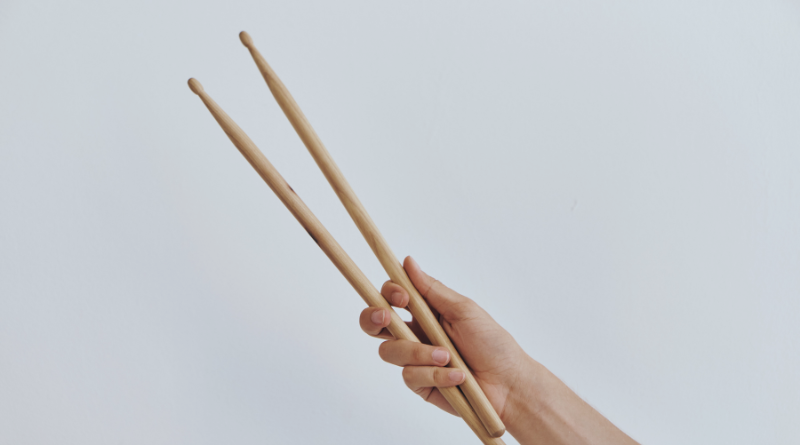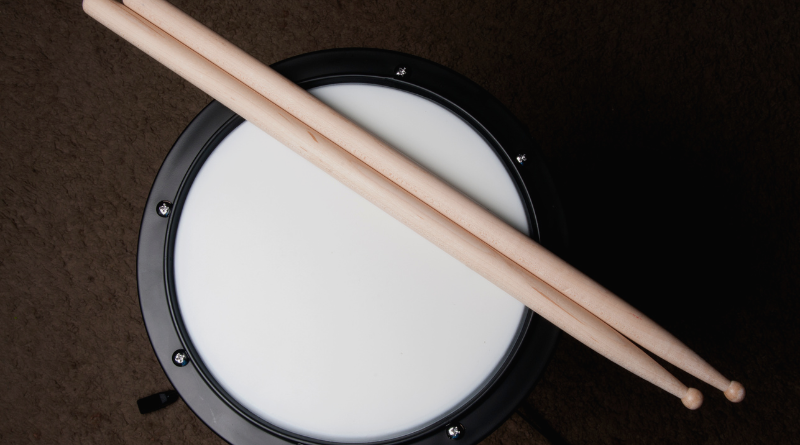If you’ve always wanted to play the drums, you shouldn’t wait until you have a full drum set to get started. Buying a drum kit is a big commitment, and playing a loud set isn’t something that everyone can do in their living space.
You should test the waters to see if this is something you’ll be interested in. It’s possible to learn the drums without having a set, as there are certain techniques and concepts that you can work on.
In this guide, we’ll explain the essentials that you need, and we’ll break down a few things that you can work onwithout a kit.
Contents
Drumsticks

The most vital thing that you need to learn to play the drums is a pair of drumsticks. Before sitting at a drum kit, you should get used to using these. Get accustomed to how they feel in your hands and embrace how it feels to hit different surfaces with them.
There are dozens of drumstick types available, but the best ones to start with are 5As or 7As. If you want something light in your hands, 7A drumsticks are the better option. If you want something a bit more universal,5As are a standard choice.
Every drumstick brand has 5A and 7A sticks, so it doesn’t matter which brand you pick at this stage.
Practice Pad

You can use your drumsticks to play on any surface, but it will feel a lot more comfortable to play on a practice pad. So, that should be your next purchase after a pair of sticks. Practice pads are designed to allow you to practice quietly when you’re not playing at a kit.
Practice pads can be placed on tables for stability, but it may also help to get a snare drum stand to mount the pad onto.
Practice pads range from 6” to 14”, but it’s better to get a larger one if you can. You’ll have more space to play, which is great for getting the feel of moving your sticks around. It’s even better to get multiple practice pads for that, but you’ll just need one if you’re starting out.
Kick Drum Practice Pad

The one thing that practice pads don’t help with is training your bass drum foot. You use your feet just as much as your hands when playing a drum set, so another thing you should get is a kick drum practice pad.
Most kick drum practice pads require you to get a kick drum pedal as well. However, there are a few with built-in pedal designs.
When you set up a hand practice pad along with a kick drum practice pad, you’ll have a small drum kit setup ready to go. From here, you can start learning how to play the drums without sitting at a proper drum set.
Things to Work On
Here are a few things to work on with your practice setup that will transfer over to a drum kit. The initial switchover will feel a bit strange, but things will even out once you get used to how playing a drum set feels.
Rudiments
Rudiments are the primary thing to practice on a pad. These are hand combinations that you play repeatedly to work on hand speed, technique, and timing. They’re the building blocks of drumming, and they give you vocabulary on the kit.
The basic rudiments to start with are single strokes, double strokes, paradiddles, flams, and drags. You should play these repeatedly on the pad to develop your muscle memory. When you move to a drum set, your muscle memory will kick in and allow you to play them easily.
Technique
Technique refers to how you play the drums. You should put time into focusing on how you’re holding the drumsticks and how you’re playing the bass drum pedal.
Make sure to have a loose grip on your sticks but keep it firm enough so that they don’t fall out of your hands.
Decide whether you want to play the bass drum pad with your heel down or up. Stick to one and get accustomed to how it feels to play the bass drum pad constantly like that.
Basic Grooves
You’ll be able to play basic grooves with a practice pad setup. You can play the edge of a practice pad to replicate a hi-hat, and then you have your bass drum pad and hand pad to play the bass and snare parts.
This is where most of your learning will happen, as the grooves you learn will be the biggest things that you transfer over to a full drum set.
Timing
When you play drums, you need to have a good sense of timing. Make sure to work on that skill when using your practice pad setup. The best way to do that is by playing with a metronome. Play rudiments along with a metronome at different speeds.
You should also play grooves while using a metronome to make sure that you’re playing them with consistency in the tempo.
Listening
Another good way of learning the drums is by watching other people play. You don’t even need a practice pad setup for this. You’ll need to listen very carefully to see what people are doing, and having a good ear is something that will benefit you greatly as a drummer.
You can also watch drum lessons and soak the information in for when you’re ready to play on a full acoustic kit.
Final Thoughts on How to Learn Drums without a Drum Set
Learning to play the drums without a drum set isn’t ideal, but it’s very possible. You just need some sticks and a practice pad. We also suggest that you get a kick drum practice pad, as the biggest struggle people have when moving to a full kit is getting used to the bass drum.
When you have that setup, you can work on rudiments, timing, technique, and a few basic drum grooves. After working on those things for a while, you’ll be able to transfer your skills over to a drum set with relative ease.